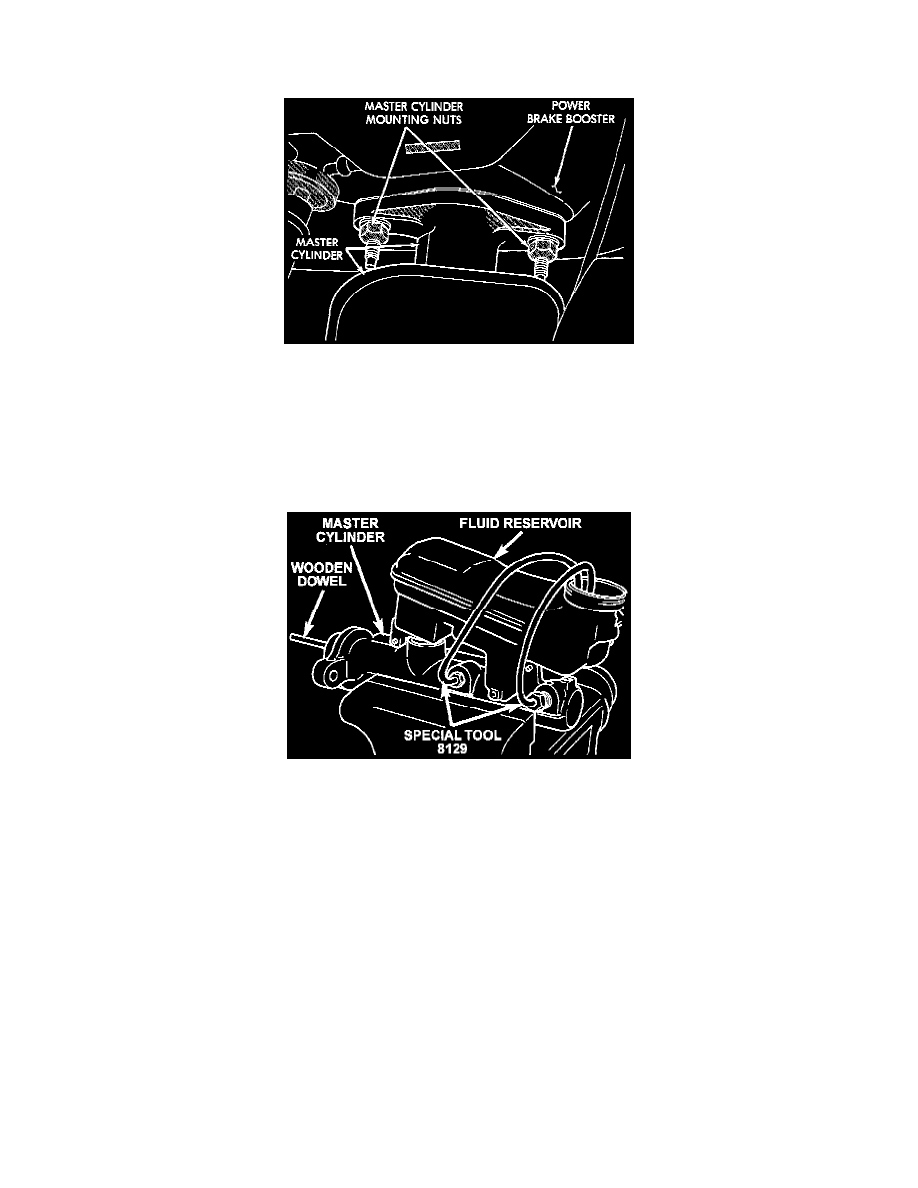Vision V6-3.5L VIN F (1997)

Brake Master Cylinder: Service and Repair
Master Cylinder Replacement
Master Cylinder Mounting
REMOVE
1.
Disconnect primary and secondary brake tubes from master cylinder housing. Install plugs at brake tube outlets.
2.
Remove the 2 nuts attaching the master cylinder to the vacuum booster.
3.
Slide master cylinder straight out from the vacuum booster.
BLEEDING MASTER CYLINDER
Bleeding Master Cylinder
NOTE: The master cylinder used on this vehicle, has ISO style flares and metric threads on the master cylinder outlet ports. When bleeding
master cylinder, it will be necessary to fabricate bleeding tubes with the correct style flares and metric tube nuts.
1.
Clamp the master cylinder in a vise.
2.
Attach Bleeding Tubes, Special Tool 8129, or equivalent to master cylinder. Position the bleed tubes in the fluid reservoir of the master cylinder
so the outlets are below the surface of the brake fluid when the reservoir is filled to the proper level.
3.
Fill reservoir with brake fluid conforming to DOT 3 specifications such as Mopar or an equivalent.
4.
Using a wooden dowel per, fully depress master cylinder pistons slowly then release allowing pistons to return to the released position. Repeat
several times until all air bubbles are expelled.
5.
Remove bleeding tubes from master cylinder. Plug outlet ports of master cylinder and install cap on reservoir.
6.
Remove master cylinder from vise and install on power brake vacuum booster.
NOTE: It is not necessary to bleed the entire hydraulic system after replacing the master cylinder, providing that the master cylinder has been
adequately bled and filled upon installation.
INSTALL
1.
Install master cylinder on studs of vacuum booster, aligning the vacuum booster push rod with master cylinder piston.
2.
Install the master cylinder mounting nuts. Tighten the nuts to a torque of 28 Nm (250 in. lbs.).
3.
Connect brake tubes to master cylinder primary and secondary ports. Tighten fittings to 17 Nm (145 in. lbs.) torque.
